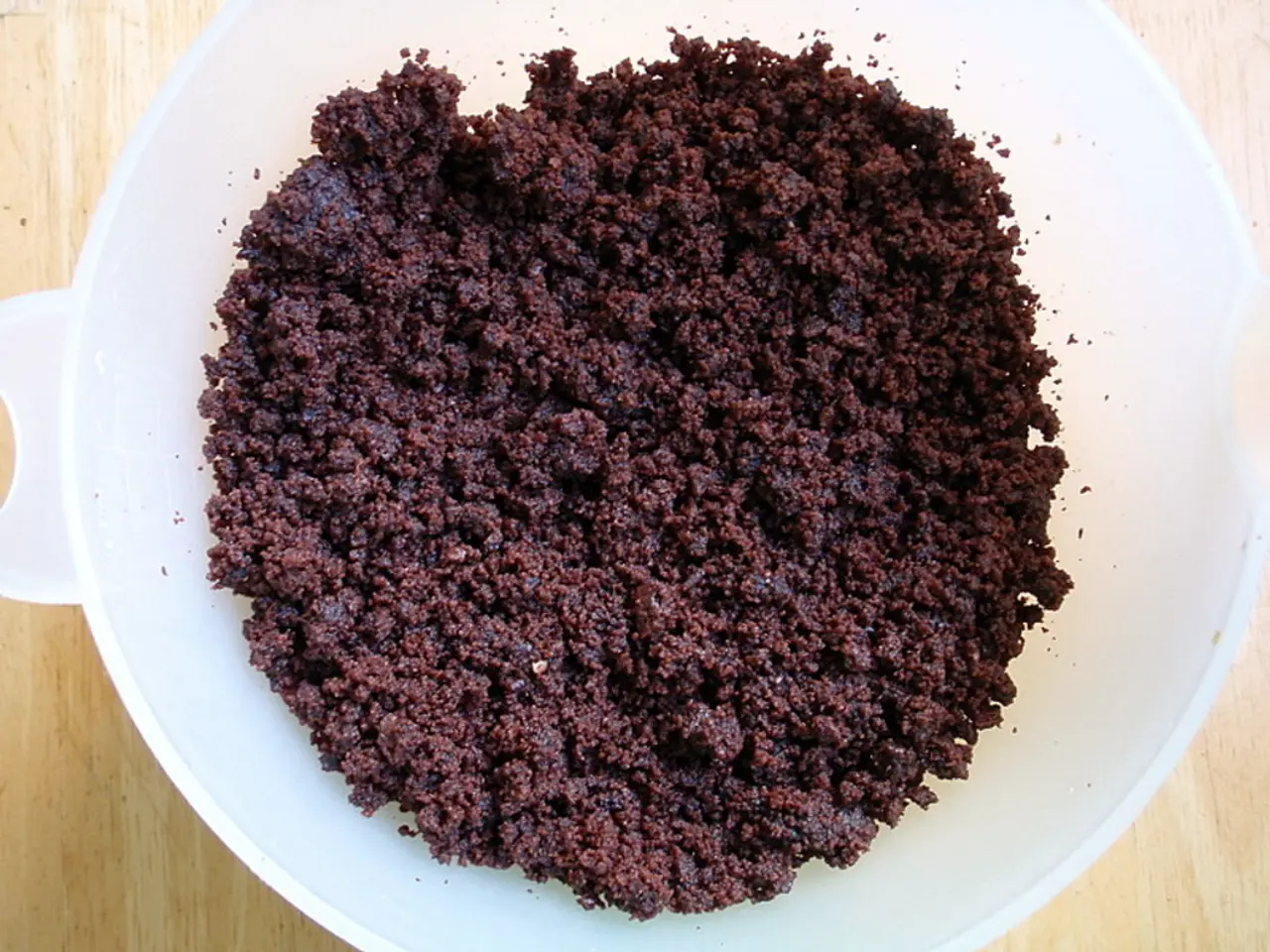Diarrhea-induced discomfort in the bottom: Understanding causes and additional information
A bout of diarrhea can lead to discomfort in the anal area, often due to factors such as anal fissures, hemorrhoids, or irritation from frequent loose stools. This article offers some effective home remedies to alleviate the discomfort and promote healing.
Common causes of a sore bum after diarrhea include anal fissures, small tears in the anal skin, and hemorrhoids, swollen veins in the anal area. The frequent wiping, increased moisture, and acidic irritation caused by diarrhea can contribute to soreness and possibly cracks in the skin or swollen veins.
To soothe the irritation and promote healing, several home remedies are recommended:
- Warm sitz baths: Soaking the anal area in warm water for 10-15 minutes several times daily can relieve pain and relax muscles. For adults, adding 1/4 cup of salt and 1/2 cup of baking soda to a bath with water about 5 inches high might help.
- Dietary changes: Increasing fiber intake by consuming fruits, vegetables, and whole grains, and drinking plenty of water (8-10 glasses daily) can help normalize stool consistency, easing bowel movements and reducing stress on the anus.
- Gentle wiping: Using moist wipes or cotton balls instead of dry toilet paper can reduce irritation.
- Topical treatments: Over-the-counter creams containing lidocaine or hydrocortisone can temporarily relieve pain and inflammation. Natural lubricants such as pure ghee or coconut oil may reduce friction and aid healing in the case of fissures.
- Stool softeners or mild laxatives: These can be used to avoid hard stools or straining if constipation occurs after diarrhea.
- Maintaining hygiene: Keeping the anal area clean and dry, and changing diapers frequently in infants, can prevent worsening fissures or rashes.
If symptoms persist beyond a few weeks or worsen—such as increasing pain, bleeding, or lumps—consulting a healthcare professional is advised to rule out other conditions or receive specific treatments.
Good hygiene is key to helping a baby experiencing diarrhea-related diaper rash. Regularly changing diapers, using superabsorbent diapers, applying wet wipes free of soaps, essential oils, detergents, and potentially irritating fragrances, using barrier creams or emollients, and applying a low dose corticosteroid cream if symptoms continue despite at least 3 days of trying other soothing treatments can help manage the rash.
In cases of bacterial or fungal infections causing diaper rash, topical antibacterial and antifungal creams are available. For older children and adults, treatments for a sore bum from diarrhea include using damp toilet paper or wet wipes, applying petroleum jelly, trying a sitz bath, applying barrier creams such as zinc oxide, sticking to loose, cotton underwear, and avoiding irritants.
It is essential to remember that while these home remedies can provide relief, it is crucial to consult a healthcare professional if symptoms persist or worsen. Dehydration, caused by excessive bathroom use or diarrhea, can lead to symptoms such as extreme tiredness, dry skin, chapped lips, thirst, dark urine, reduced amount of urine, dizziness, lightheadedness, headaches, fainting, palpitations, and reduced blood pressure upon standing up. If pain and diarrhea do not get better, or if signs of dehydration start to develop, seeking medical attention is advised.
In conclusion, a bout of diarrhea can cause discomfort in the anal area, but with proper home care and hygiene, the discomfort can be alleviated, and healing can be promoted. If symptoms persist or worsen, consulting a healthcare professional is advised.
- Anal fissures, hemorrhoids, and irritation from diarrhea can cause discomfort in the anal area.
- Warm sitz baths can help relieve pain and relax muscles in the anal area.
- Increasing fiber intake and drinking plenty of water can help normalize stool consistency.
- Gentle wiping with moist wipes or cotton balls can reduce irritation in the anal area.
- Over-the-counter creams containing lidocaine or hydrocortisone can temporarily relieve pain and inflammation.
- Stool softeners or mild laxatives can help avoid hard stools or straining if constipation occurs after diarrhea.
- Maintaining hygiene and changing diapers frequently in infants can prevent worsening fissures or rashes.
- Persistent or worsening symptoms beyond a few weeks require consulting a healthcare professional.
- A diaper rash's good hygiene management in babies involves regular diaper changes, superabsorbent diapers, and applying barrier creams or emollients.
- In cases of bacterial or fungal infections, topical antibacterial and antifungal creams are available.
- For older children and adults, treatments for a sore bum from diarrhea include using damp toilet paper, applying petroleum jelly, sitz baths, and barrier creams.
- Dehydration caused by excessive bathroom use or diarrhea leads to symptoms like extreme tiredness, dry skin, and dark urine.
- If pain and diarrhea do not improve, or signs of dehydration start to develop, seeking medical attention is necessary.
- Proper home care, hygiene, and hydration can alleviate discomfort and promote healing in the anal area.
- Chronic diseases like colitis, Crohn's disease, and ulcerative colitis also affect the digestive system and may require therapies and treatments.
- Atopic dermatitis, skin care, diabetes, hepatitis, mental health, neurological disorders, skin-care products like CBD, diapers, nutrition, and fitness-and-exercise are other aspects of health and wellness to keep in mind at the workplace-wellness.




